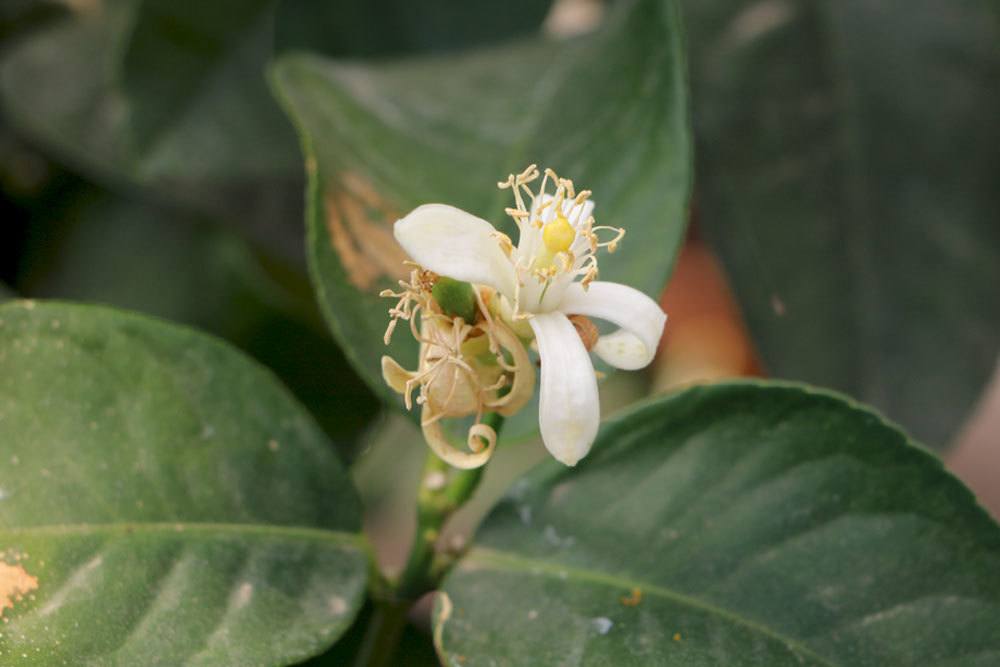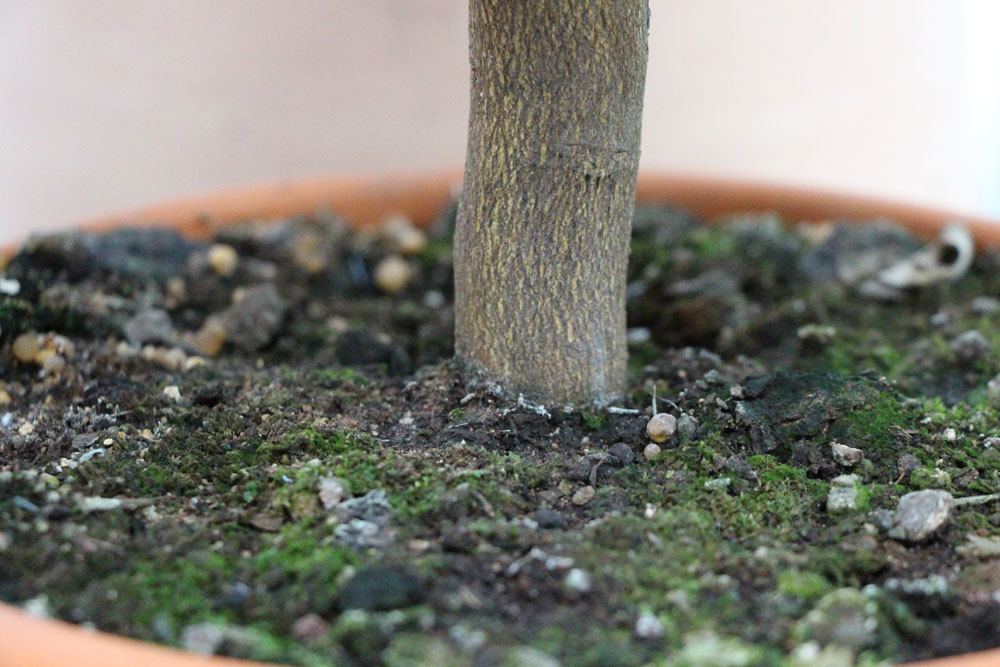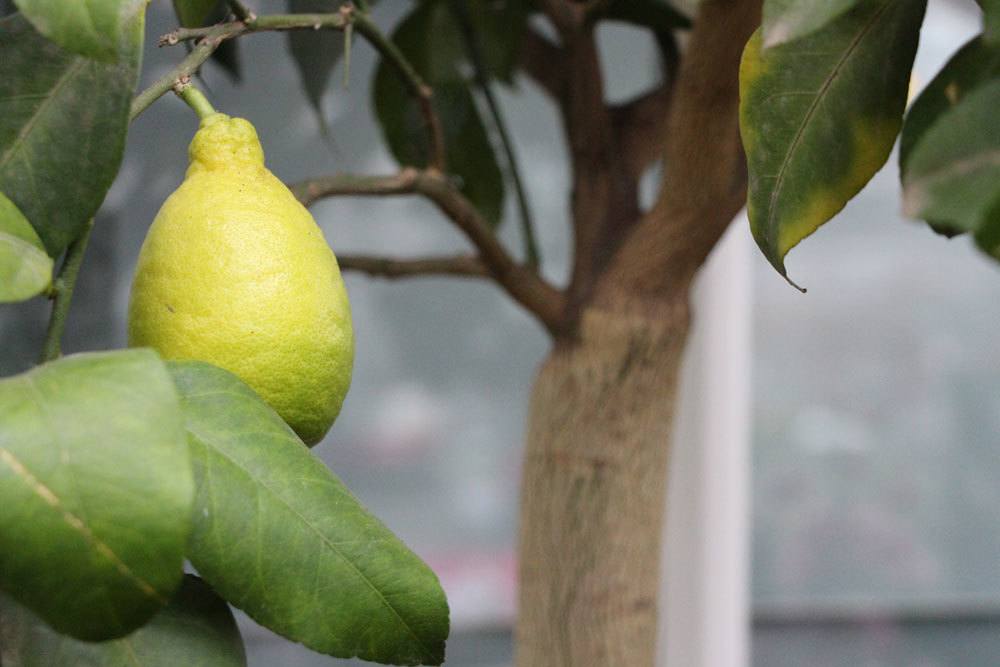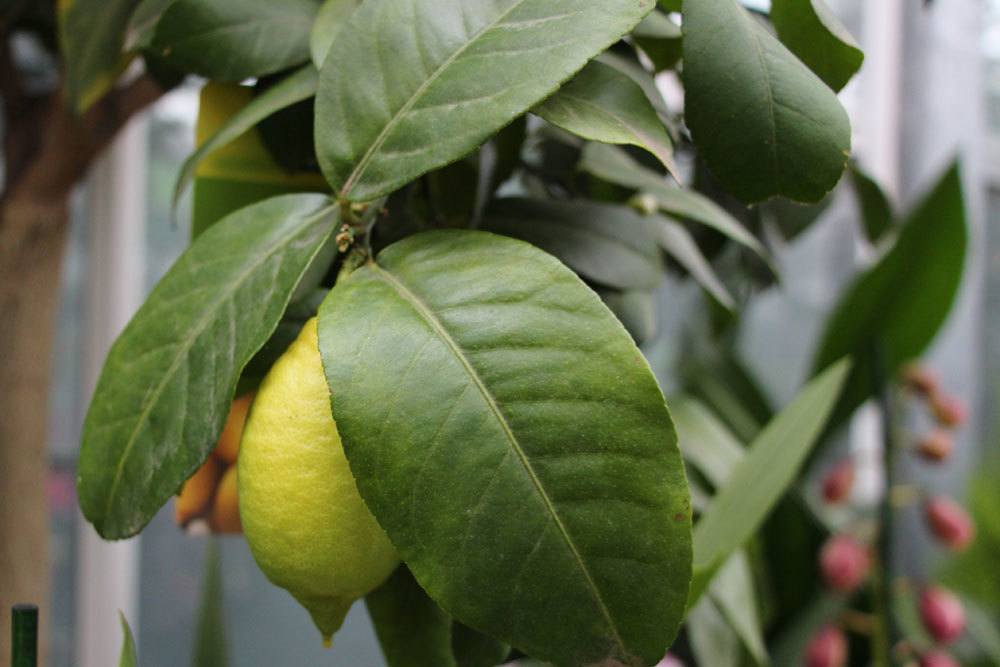Lemon trees are Mediterranean beauties, which for several years are increasingly found on balconies and in conservatories. Care for the plants is not complicated, but still need to meet certain requirements. The shedding of flowers and fruits puzzles passionate citrus gardeners. Various factors can be responsible for the loss. To eliminate the problem, you should get to the bottom of the cause.
Contents
Various causes
Natural selection
The evergreen lemon tree is a self-pollinator. If conditions are right, it is not uncommon for citrus plants to bloom and produce flowers throughout the year. Even young plants can come up with an abundance of flowers. However, this does not guarantee an abundant harvest. In young years or when the citrus tree has a small size, the plants lack the necessary strength to optimally supply all the fruit set. As a result, the citrus tree discards a large number of withered flowers, so fruit ripening does not occur here.
You can observe this healthy selection especially on grafted plants. The roots are strong, but the grafted upper part is not yet able to bear enough fruit. Experienced lovers of exotic plants help a little here and selectively remove the excess flowers. There is no rule of thumb for this measure. It is rather an interplay between gut feeling and experience.

Weather
Influences of the weather
Older and larger lemon trees may also experience increased loss of leaves and fruit. In this case, it is advisable to subject the plant to a closer examination. After all, these plants are usually able to form and supply more fruit set. An important factor that can cause a variety of problems with citrus plants is an incorrect location.
- the lemon tree needs a sunny location
- warmth promotes growth
- shady places are unsuitable
Mediterranean plants are very hungry for sun. Only in a bright, warm place can the plants develop optimally and form flowers and fruits. Lack of light quickly becomes noticeable. The leaves take on a pale coloration and the growth of the evergreen lemon trees stagnates. If the plant loses more of its flowering and fruiting glory, you should check the location of your lemon tree. In addition to a planting location that is too dark, the weather can also affect the growth of the plant.
Draught affects the plants
- long periods of cold weather can cause the leaves to fall off
- the lemon tree should be protected from rain
In the summer, the exotic rhombic plants do not mind being outdoors. Provided that the conditions are suitable. If the temperatures drop for a long period of time and rain falls for weeks, you should move the plants to a sheltered place.
Proper watering
Among passionate lovers of evergreen trees, it is an open secret that the proper supply of water can positively affect the development and harvest. Accordingly, citrus plants are sensitive when their need in this respect is not properly met.
- prolonged drought leads to pale discoloration of the foliage
- curled or crippled leaves may indicate lack of water
- young shoot tips stunt first in prolonged drought conditions

Citrus plants can cope with a small amount of moisture, but the root ball should not dry out completely. Like all evergreen plants, these little trees need watering in the cold season. To avoid loss of plant parts, you should take into account the following tips when caring for the fancy little trees.
This is how you proceed:
- watering is carried out when the top layer of the substrate has dried up
- small amounts of lime in the water will not harm the lemon tree
- spray the foliage with a water sprayer at irregular intervals
- allow excess water and rainwater to drain away through a drainage system
If your citrus plant’s growth is stagnant, you can help it along by allowing it to dry out for a short period of time. In this case, it is recommended to stop watering the plant for about 7 days. Watch the lemon tree closely to avoid long-lasting damage.
Waterlogging can promote problems and diseases in rhombus plants. The moist environment around the roots promotes infestation of tubular fungi. These cause root rot. A dangerous disease against which there are no countermeasures.

Nutrient deficiency
Lack of nutrients as a cause
It is not uncommon for plants to do well in a sunny location and with proper watering techniques. When the first problems appear after about 2 or 3 years, the perplexity is great. In addition to water, heat and light, the citrus tree needs a certain dose of nutrients. The plants belong to the weakly consuming plants.
The minerals in a large tub with humus-rich substrate are enough for the lemon tree for several months. Once these are depleted, flowering and fruiting suffer from the deficiency. Loss or shedding of plant parts may occur.
Here’s what you can do to counteract a nutrient deficiency:
- use a special fertilizer for citrus plants
- fertilize from March to the end of August
- during the winter months, the supply of nutrients is stopped
- liquid fertilizer is administered via the watering water
- repot the plants every 2 to 3 years
The lack of nutrients is not only noticeable in the form of dropped flowers and fruits. The first signs are discoloration and crippled leaves. Effective first-aid measures consist in immediately repotting the plants in fresh soil or adding liquid fertilizer to the substrate. Do not overfertilize lemon trees. Apply strictly according to package directions or reduce the amount specified there. An over-supply of nutrients can cauterize the roots.
Wrong winter quarters
In the warm summer months, the lemon tree enjoys staying on a sunny balcony or bright terrace. Once temperatures drop permanently into the single digits in the fall, it’s time to move. Even young plants can survive temperatures of about 3° C unharmed.
However, if you would like to continue to enjoy your citrus tree for many years to come, you should not try this. The change from a full-sun outdoor location to a darker room stresses the little trees. The age of the plants does not play a significant role. During overwintering, various reasons can lead to the loss of leaves.
- dry room air
- the plant is exposed to drafts
- the root ball dries out
- pest infestation
- lack of light

If the size of the containers allows it, a place on a bright windowsill is optimal for the citrus plants. Placed on a thick polystyrene sheet, the plants are additionally protected from the cold from below. If possible, avoid direct sunlight. This stimulates the plants to grow more and dries out the substrate in the container more quickly. In the case of a location on the south window, the care of the fancy plant beauties increases enormously. Here, under no circumstances should the plants be left to their own devices for a long period of time.
In addition to an incorrect location, pests can play their part in dropping flowers and fruit during the winter. While aphids occur almost exclusively in summer, spider mites attack houseplants during the cold season. The cell sap-sucking insects preferentially colonize the underside of leaves. As the appetite of the spider-like insects increases, the foliage of the plants dies. The lemon tree is no longer able to optimally supply flowers and fruits.


